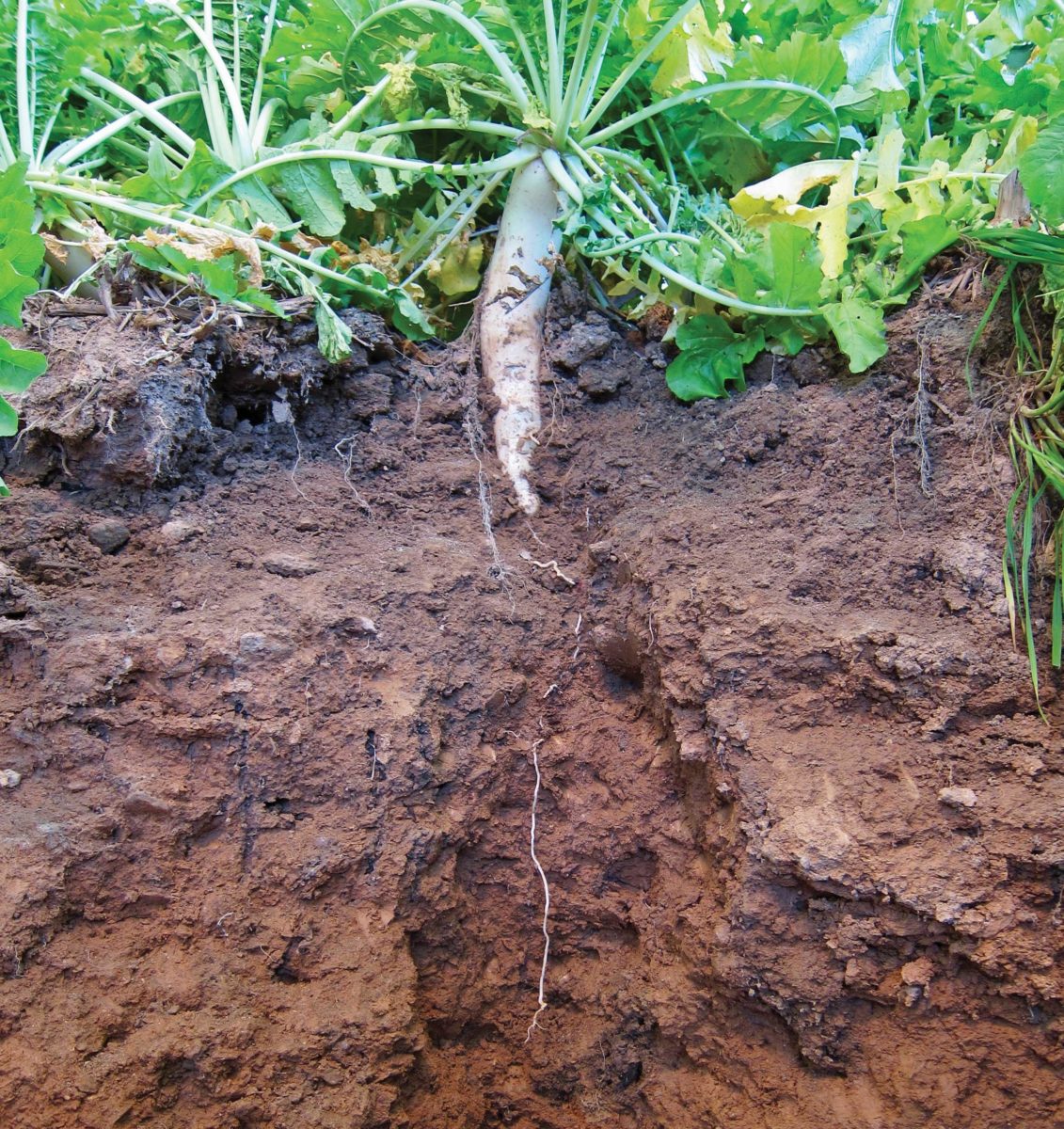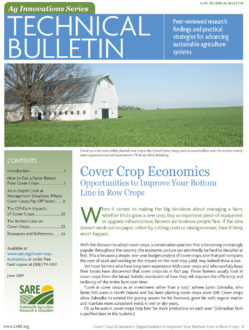
With farmers planting more acres than ever before, the time window to get into and out of fields for planting, harvest and other operations is smaller than ever. Unfortunately, the sense of urgency to get over a lot of fields quickly can lead to situations where farmers are using large, heavy equipment on fields where moderate to high moisture leads to compaction. Once the soil is compacted, not only do yields sometimes drop by 10–20% [7], but future rainfall infiltration is also negatively affected. This leads to a vicious cycle of muddy fields and compacted tracks that hurt crop stands, root growth and ultimately yields. The compaction, if widespread enough, can even delay the ability to get into the field in the future because of reduced drainage in compacted areas.
Although prevention is the best solution, farmers facing compacted soils may feel little choice other than to buy deep subsoiling tillage equipment. This may require upgraded horsepower tractors to operate, not to mention expensive fuel and labor costs. When adding the extra equipment, fuel and labor costs, the cost of subsoiling a field to address compaction can be $15 per acre or more [11]. Even worse, the benefit from subsoiling is often very temporary as high-clay subsoils swell back together and new compaction occurs.
Deep-rooted cover crops can provide a less costly and longer-lasting solution to compaction issues. A four-year research study on soil compaction at Ohio State University showed that soils compacted with a 20-ton grain cart yielded better when soybeans were grown after cover crops compared to using annual subsoiling. In the same study, corn after cover crops yielded just as well as corn after subsoiling, with the notable exception of the 2012 drought year, when the cover crop plots yielded better than subsoiling [13].
Particular cover crop species such as cereal rye and radishes, if allowed enough time to grow, often root more deeply than summer cash crops such as corn and soybeans. The macropores created by those deeper roots help get air and water deeper into compacted soils. These deeper cover crop roots create paths for the cash crop roots to more effectively grow through the compacted zones in the next season. The living roots of cover crops also stimulate earthworm populations, which through their tunneling also start to improve compacted soils.
In the long term, improved soil organic matter from cover crops, especially when combined with less tillage, helps to build soil aggregates, which provide more structure and strength to the soil so that compaction is prevented in the first place. Think of driving a vehicle across a dense turf sod compared to a bare soil after a rain. Where would the vehicle get stuck? Combining no-till and cover crops can create an effective, long-term solution to soil compaction, allowing earlier spring planting and wider time windows to access fields for time-sensitive operations such as harvest.
Snapshot: The financial impact of addressing compaction with cover crops
Cover crops break even for corn in year two and provide a net profit for soybeans in year two, assuming savings of $15.30 per acre from not having to do annual subsoiling. Returns for corn average -$16.06, $16.72 and $33.20 after one, three and five years of planting a cover crop. Soybean returns average -$8.25, $15.72 and $25.48 after one, three and five years. (See Table 4 and Table 5 for details.) A positive net return could be delayed to year three if subsoiling is done less frequently than on an annual basis.
